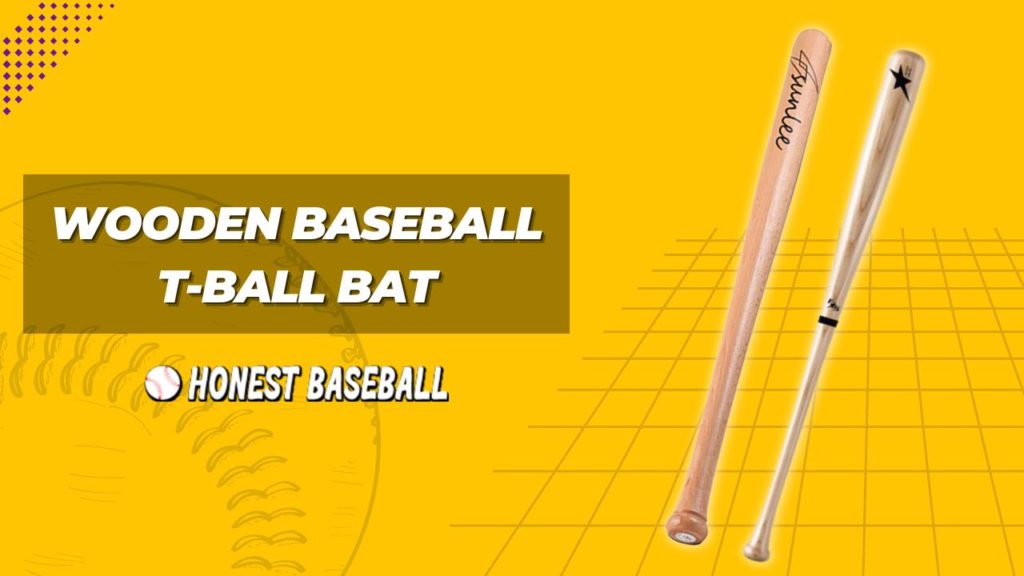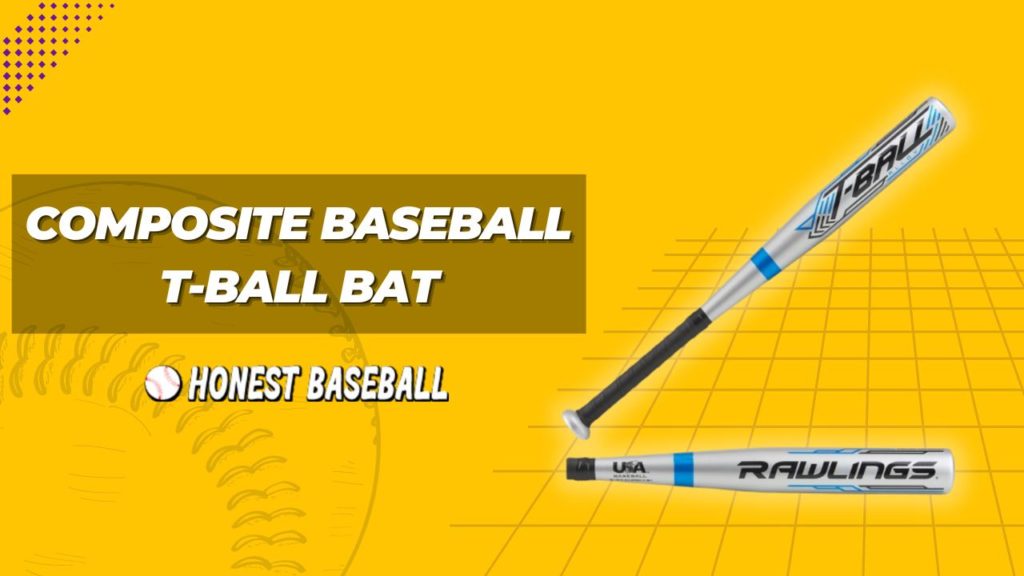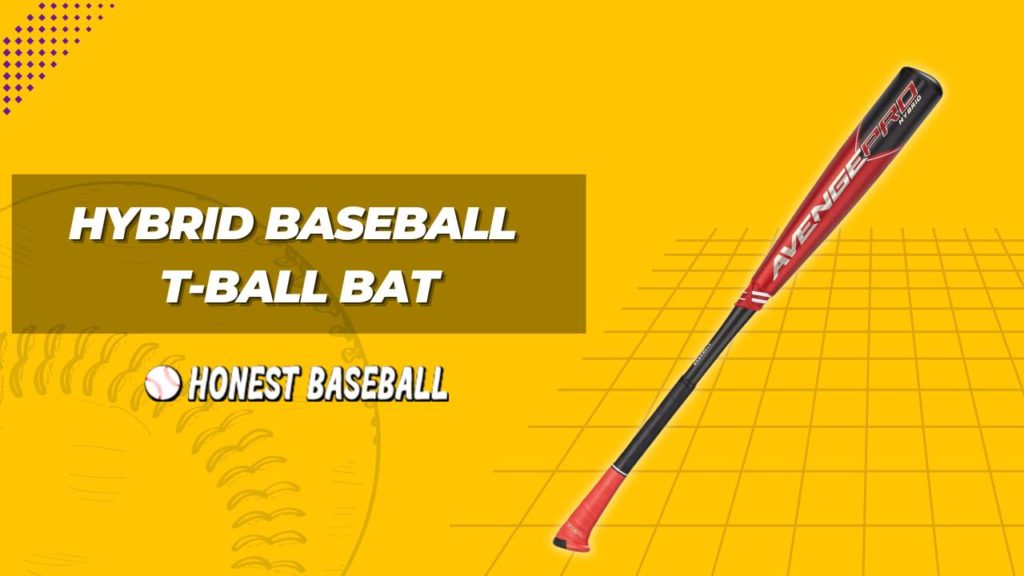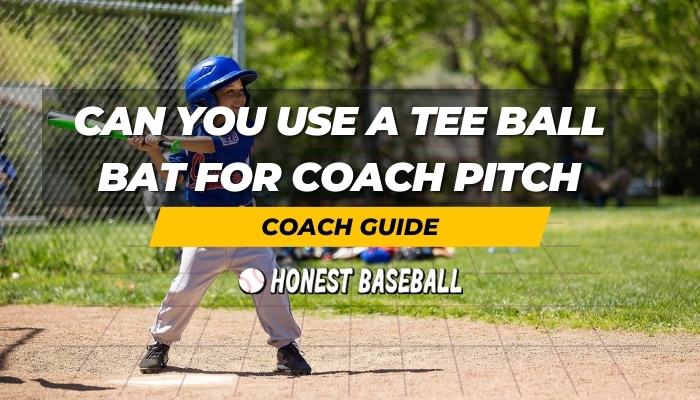Coach pitching is the primary stage of teaching your kids to hit baseball. Thus it’s too sensitive to consider every aspect also. Since there are different rules in every state, you may come up with this question – can you use a Tee ball bat for the coach pitch?
Well, you can use Tee ball bats for coach pitching if you follow the rules of the league or division, particularly the one your kid is participating in.
Little League, Minor and Major League, Senior League, etc., have various baseball laws. So, before you start training your kids, it’s wise to learn the rules before each event.
To help you out with this hassle, I’m gonna share the rulebook of the Tee ball for coach pitch along with my recommended bat selections in this post. Let’s head into knowledge sharing.
Rulebooks for Tee Ball Bat For Coach Pitch

There are some applicable rules by Little League Baseball that you need to follow for using T Ball bats. For instance, a player’s bat should meet the eligibility criteria of the USABatS or USA Baseball Bat Standards.
According to their rules, a T Ball bat should have a smooth and rounded body. When it comes to material, it can be made of wood, composite or other materials mentioned in the USABat standards rulebook.
“Before the 2018 season, there was a bit of flexibility with using T Ball bats. However, afterward, the Little League event organizer made some changes to the existing rules and also introduced some new bindings.”
The overall brief of the rules is demonstrated below, following different divisions:
Major or Minor Divisions
For both major and minor leagues, the bat should have the official USA Baseball logo. However, it’s not mandatory for a 1-piece wooden bat.
The rules allow the use of T Ball bats for coach pitching and machine pitching if they fall on the approved list. Basically, the approved T Ball bat list is the partner manufacturers of the Little League.
The bat length shouldn’t be longer than 33 inches. It must have at least 2 ⅝ inches of diameter (not larger than that also.)
If it’s made of wood and has a 30-inch length, the diameter should be at least 2 15/16 inches. Also, you can’t tape a sleeve thicker than 16 inches.
Intermediate and Junior Divisions
The intermediate (50-70) and junior division players are allowed to use up to 34-inch long bats. And like before, the diameter shouldn’t exceed 2 ⅝ inches.
The rest of the rules are also similar to minor and major leagues. However, the regulation for tape sleeves for wooden bats is extended to 18 inches.
Unlike the other divisions, intermediate and junior league bats should have a visible silkscreen certification logo on its body. Not only that, the logo size should be at least 0.5 inches in diameter, along with a rectangular shape for wooden baseball bats.
“There’s no need to use the USA Baseball logo in terms of a 1-piece wooden bat.”
For both aluminum and composite material bats, the logo size should be 1.5 inches on either side of the body and marked on the barrel. Besides, all bats should meet the performance standards of BBCOR.
Senior League Division
In the case of the senior division, players can use 36-inches long baseball bats that have 2 ⅝ inches in diameter.
The diameter is flexible to 2 15/16 inches in terms of wooden bats. And if the length is 30 inches, your bat should have at least 2 ⅞ inch diameter on the handle side.
For tape sleeves of wooden bats, the size shouldn’t be more than 18 inches. There are also rules for bat weight in senior leagues. It can have 3 oz. less than the numerical value of the size. For example, if the length is 36 inches, the weight shouldn’t be more than 33 oz.
Except for 1-piece wooden bats, all must ensure meeting the standard of BBCOR. There should be 0.5-inch performance standard certification logos on 2 sides of the bat while ensuring proper visibility in contrast with the wood bat color. And the logo size should be at least 1.5 inches in diameter for aluminum and composite bats.
Senior League Challenger Division
Alongside the mentioned requirements of the senior league division, the challenger division has some additional rules. Likewise, all non-wooden bats should have cork grip and tape. The minimum diameter of the tape should be 10 inches.
“All sorts of slippery labels are prohibited for wooden and non-wooden (metal or composite) types of baseball bats.”
Unlike other divisions, the challenger league has some flexibility regarding bat selection. For example, Wiffle bats are approved in this league.
Once using doughnuts on bats was permissible. However, now the league organizers decided to ban this.
“Doughnuts are basically ring-shaped accessories for baseball bats that help you increase the swing speed by increasing the weight.”
In terms of T Ball bats, the maximum length is limited to 26 inches. Also, these bats should be labeled with the USA Baseball logo.
Little League Challenger Division
You’ll find some similarities in bat rules between the Little League, Minor, and Major divisions. For instance, the bat length is limited to 33 inches with a diameter limit of 2 ⅝ inches.
For wooden bats, the limit is 2 15/16 inches. If your bat length is 30 inches long, the diameter shouldn’t be bigger than 2 ⅞ inches. The diameter for wooden bats’ tape sleeves should be equal to or less than 16 inches.
And as mentioned before, there’s no need for the USA Baseball Logo in terms of 1-piece wooden bats.
What Size Bat Is Used for Coach Pitch In General?
Unlike typical baseball bats, coach pitch bats are comparably lightweight and short. However, their barrel side is a bit larger to make it easy to hit for kids (ages between 3 to 8 years). Because of the large barrel, these are also called Junior Big Barrel bats.
If breaking down more, you should pick a coach pitch bat for your kids with a 2 ¾ to 2 ⅝ inches diameter (barrel.) When considering the length-weight ratio, -10 to -12 size bats are best to use.
Types of T Ball Permitted for Baseball Coach Pitch
There’s no difference between the T Ball bat types and regular baseball bats. All T Ball bats are segmented into 4 types:
Wooden T Ball Bats

The wood-made bats are the most common T Ball bats. Usually, maple, Ash, and Birch woods are used in the T Ball bat constructions.
Alloy T Ball Bats

Because of their extended durability, alloy aluminum bats are very popular among baseball players. These bats are a bit thinner than wooden ones. Because of the material, they tend to be more responsive also.
Composite T Ball Bats

Unlike aluminum and wooden baseball bats, composite bats are made out of a mix of multiple materials. In general, graphite, carbon fiber, Kevlar, and fiberglass are used in construction.
“Composites bats aren’t permitted in many regions. So, before getting one for professional baseball, make sure to check your region’s bat rules.”
Hybrid T Ball Bats

These bats can be made of any material. However, they have 2 pieces. The barrel part is usually made of alloy, while the handle is built with composite materials.
Because of the construction style, these bats are comparably lighter, especially the handle part. Besides, the barrels are a little longer than wood bats.
“All baseball material bats can be two types depending on the manufacturing designs – solid 1- piece bat and 2-piece bats.”
4 Best Approved T-Ball Bat List
The list of approved T Ball bats is very long. You may find it hard to pick the best T Ball bat among them. So, I listed my top favorites below, which I prefer to teach my kids.
If you want to motivate your kids with a bat used by legendary Babe Ruth, this Louisville Slugger is the best shot.
The single-piece baseball bat is made out of alloy, making it more responsive than typical wooden bats. The construction also made it lightweight. So, it feels handy on kids’ hands. Also, the handlebar is covered with their signature cushion grips for extra comfort.
As described above, to ensure meeting the eligibility of all leagues, Louisville Slugger has the USA Bat Standard logo on the body.
With over 100 years of legacy, Mizuno is undoubtedly a reliable brand for baseball, softball, and fastball equipment and gear.
The Japanese brand introduced this T Ball bat series under the softball segment. However, it’s used by many players for coach pitch.
Its T Ball coach pitch bat is one of their collaboration signatures. Mizuno particularly partnered up with Jennie Finch for this softball bat.
They tailored the bat to all the softball player’s needs. As a result, you’ll find this extremely lightweight, a perfect deal for kids aged between 5-8. For additional comfort, it’s equipped with its patented “Speed-Helix” grip.
The Easton ADV is a Tee Ball bat series introduced by one of the top baseball sporting brands, Rawlings. It’s built by following all the essential rules of Tee Ball bats mentioned in different leagues.
For example, the bat diameter is the typical 2 ⅝ inches with a length of 26 inches. There’s also the required USA Baseball certification logo on either side of the bat.
If talking about the key specifications that make this bat a better deal, I just loved the eye-catching design first, along with its hyper-lite composite build. It’s a single-piece bat. Therefore, kids won’t feel significant trembles while hitting.
Finally, it’s my and thousands of parents’ favorite T Ball bat, again made by Rawlings. Its customers’ reviews (3,300+) say more about the high standard of its quality.
The 26-inch Tee Ball bat is the perfect choice for first-timers. It’s also made of composite materials along with carbon fiber.
Though there are 24 and 25 inches sizes also available, I suggest picking this one to avoid upgrading sooner. Besides, kids can get a bigger sweet spot with this size.
Rawlings has followed a -12 drop weight technology in designing this bat. Hence, it gives a faster swing. You can find different color options in this model, including green, white, black, and blue.
Frequently Asked Questions
What’s the difference between a tee ball bat and a baseball bat?
The basic difference between a Tee Ball bat and a baseball bat is their length. In general, baseball bats can have a length from 26 inches to up to 36-inch depending on the age and league group.
On the other hand, the maximum length for Tee Ball bats is limited to 26 inches, starting from 24 inches usually.
What ball to use for the coach pitch?
For the coach’s pitch, you should use a safety ball. These are lookalike baseball balls, however, made out of cushion or foam.
Since coach pitches are mainly intended for first-timer kids, they won’t be able to resist regular hard baseball. Therefore, safety balls are recommended.
What size bat can you use in Little League?
For the Little League baseball divisions, your bat size (length) should be equal to or less than 33 inches. Regarding the diameter, it should be 2 ⅝ inches at maximum for composite or alloy bats. And for wooden bats, it should be a minimum of 2 15/16 inches.
How do I choose a coach pitch bat?
The main consideration when choosing a coach pitch bat is following the bat rules. If every rule is settled (described above), the primary thing to consider is the player’s comfort, which depends mainly on the bat’s weight and grip. So, make sure to have a lightweight coach pitch bat with a cushioned handle.
Conclusion
Hopefully, you got the answer to the question you came up with – can you use a tee ball bat for coach pitch? In brief, you can use a Tee Ball bat for coach pitching if it’s 26 inches long, and there should be the USA Baseball certification logos on both sides of the bat.
If you want to learn more about baseball coach tips and bats, check out the below article:
How to Hold a Baseball Bat for Maximum Speed and Power?
Best Baseball Bats Under $100 | Bats That Make Sense at Budget
10 Best Baseball Bats To Grab In 2022

Hello everyone. My name is Jason Butler, and I live in California, America. I was a professional AAA Minor League Baseball player. I lost my chance of playing MLB for injury issues, but I did not lose my love for baseball. I attended the coaching training program and am now working as a coach in a small school in San Diego.
I always love to share my experience and knowledge if that can help you. Play baseball, and stay fit.
